We included HMH Into Math Grade 5 Answer Key PDF Module 15 Lesson 4 Multiply Decimals by 1-Digit Whole Numbers to make students experts in learning maths.
HMH Into Math Grade 5 Module 15 Lesson 4 Answer Key Multiply Decimals by 1-Digit Whole Numbers
I Can multiply a decimal by a 1-digit whole number using the Distributive Property, partial products, and an area model.
Step It Out
Question 1.
Oceanographers recently discovered a new species of sea sponge in the Pacific Ocean. Sponges are animals, not plants, and can be found in both seawater and freshwater. Some sponges are able to move about 2.5 millimeters each day. How far might a sponge move in one week?
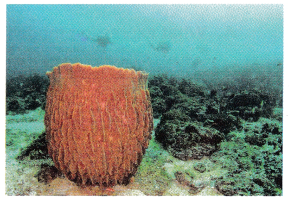
A. Write a numerical expression to model the situation.
Answer:
Number of millimeters sponge move in one week = 17.5.
Explanation:
Number of Some sponges millimeters each day move = 2.5.
Number of days in a week = 7.
Number of millimeters sponge move in one week = Number of Some sponges millimeters each day move × Number of days in a week
= 2.5 × 7
= 17.5.
B. What do the factors in your expression represent?
Answer:
The factors in the expression represent the millimeters of sponge moving a day and a week.
Explanation:
The factors in the expression represent the millimeters of sponge moving a day and a week.
C. You can use the Distributive Property to multiply.
- Break apart 2.5 by place value.
- Apply the Distributive Property.
- What is the first product?
- What is the second product?
- Add the two products.
7 × 2.5 = 7 × (______ + ______)
= 7 × ______ + 7 × _______
= _______ + 7 × _______
= _______ + ________
= _______
Answer:
Product of:
7 × 2.5 = 7 × (2 + 0.5)
= (7 × 2) + (7 × 0.5)
= 14 + (7 × 0.5)
= 14 + 3.5
= 17.5.
Explanation:
7 × 2.5 = 7 × (2 + 0.5)
= (7 × 2) + (7 × 0.5)
= 14 + (7 × 0.5)
= 14 + 3.5
= 17.5.
D. How far might a sponge move in one week?
Answer:
Number of millimeters sponge move in one week = 17.5.
Explanation:
Number of Some sponges millimeters each day move = 2.5.
Number of days in a week = 7.
Number of millimeters sponge move in one week = Number of Some sponges millimeters each day move × Number of days in a week
= 2.5 × 7
= 17.5.
Turn and Talk How can you tell that your answer is reasonable?
Answer:
The answer is reasonable as the process of finding the answer is correct without any mistake.
Explanation:
The answer is reasonable as the process of finding the answer is correct without any mistake.
= 2.5 × 7 = 17.5. Let 2.5 be kept unknown and check:
=>?? = 17.5 ÷ 7
=> ?? = 2.5.
Question 2.
The current rise in sea level is generally thought to be caused by the melting of ice sheets and glaciers. Scientists estimate that the rise in sea level is about 3.2 millimeters each year. What is the expected rise in sea level after 8 years?
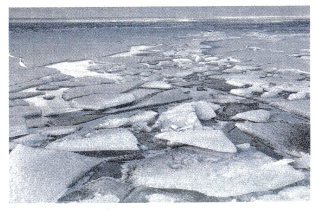
A. What expression models the situation?
Answer:
Expression models the situation:
Number of millimeters the rise in sea level expected rise in 8 years = Number of millimeters the rise in sea level Scientists estimate each year × Number of years
Explanation:
Number of millimeters the rise in sea level Scientists estimate each year = 3.2.
Number of years = 8.
Number of millimeters the rise in sea level expected rise in 8 years = Number of millimeters the rise in sea level Scientists estimate each year × Number of years
= 3.2 × 8
= 25.6.
B. What is an estimate for the rise in sea level after 8 years?
Answer:
Number of millimeters the rise in sea level expected rise in 8 years = 25.6.
Explanation:
Number of millimeters the rise in sea level Scientists estimate each year = 3.2.
Number of years = 8.
Number of millimeters the rise in sea level expected rise in 8 years = Number of millimeters the rise in sea level Scientists estimate each year × Number of years
= 3.2 × 8
= 25.6.
C. Multiply by showing partial products.
First multiply the 2 tenths by 8.
8 × 2 tenths = _______, or ______ one _______ tenths
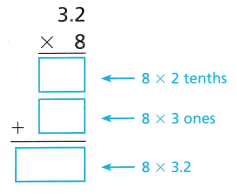
Then multiply the 3 ones by 8.
8 × 3 ones = _______ ones, or ______ tens ________ ones
Add the partial products
Answer:
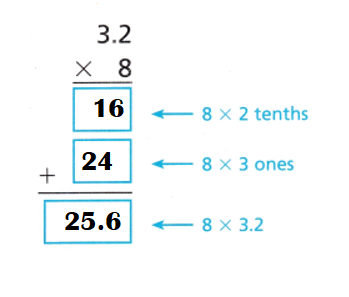
Explanation:
First multiply the 2 tenths by 8.
8 × 2 tenths = 16 ones, or 6 ones 1 tenths.
8 × 3 ones = 24 ones, or 2 tens 4 ones.
D. What is the expected rise in sea level after 8 years? How do you know your answer is reasonable?
Answer:
Number of millimeters the rise in sea level expected rise in 8 years = 25.6. It is reasonable as the process is correctly done.
Explanation:
Number of millimeters the rise in sea level Scientists estimate each year = 3.2.
Number of years = 8.
Number of millimeters the rise in sea level expected rise in 8 years = Number of millimeters the rise in sea level Scientists estimate each year × Number of years
= 3.2 × 8
= 25.6.
Turn and Talk How does this method for multiplying compare to the method used in the first problem?
Answer:
In first problem multiplication is done by using distributive property and second problem partial products method. comparatively both are different methods yet same multiplication.
Explanation:
This method for multiplying compare to the method used in the first problem both are not same process yet the solution is performed to find the answer both are done by multiplication. In first problem multiplication is done by using distributive property and second problem partial products method.
Question 3.
Coral reefs grow about 1.25 centimeters each year. About how many centimeters does a coral reef grow in 9 years?
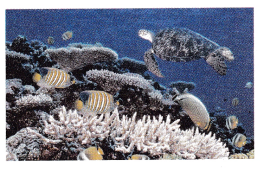
To solve, find 9 × 1.25. Use an area model to find the product.
A. Complete the area model.

Answer:
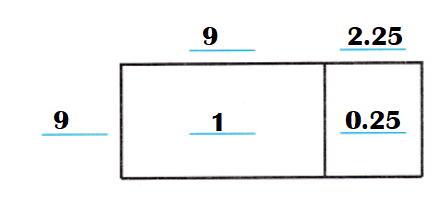
Explanation:
Area of first section= 1 × 9 = 9 centimeters.
Area of second section=0.25 × 9 = 2.25 centimeters.
Area of the model = Area of first section+ Area of second section
= 9 + 2.25
= 11.25 centimeters.
B. Add the areas of the two sections. What is the sum?
Answer:
Area of the model = Area of first section+ Area of second section
= 9 + 2.25
= 11.25 centimeters.
Explanation:
Area of first section= 1 × 9 = 9 centimeters.
Area of second section=0.25 × 9 = 2.25 centimeters.
Area of the model = Area of first section+ Area of second section
= 9 + 2.25
= 11.25 centimeters.
C. About how much does a coral reef grow in 9 years?
Answer:
Number of centimeters a coral reef grows in 9 years = 11.25.
Explanation:
Number of centimeters Coral reefs grows each year = 1.25.
Number of years = 9.
Number of centimeters a coral reef grows in 9 years = Number of centimeters Coral reefs grows each year × Number of years
= 1.25 × 9
= 11.25.
Turn and Talk Compare the methods used to solve the problems in Tasks 2 and 3. Are they similar or different? Explain.
Answer:
The methods used to solve the problems in Tasks 2 and 3 are not similar because in task 2 its addition and task 3 multiplication is performed.
Explanation:
Task 2:
Area of the model = Area of first section+ Area of second section
= 9 + 2.25
= 11.25 centimeters.
Task 3:
Number of centimeters a coral reef grows in 9 years = Number of centimeters Coral reefs grows each year × Number of years
= 1.25 × 9
= 11.25.
Check Understanding
Question 1.
A fisherman has 6 Atlantic mackerels. Each mackerel weighs 1.78 pounds. What is the weight of the 6 fish?
Answer:
Weight of the 6 fishes = 10.68 pounds.
Explanation:
Number of Atlantic mackerels a fisherman has = 6.
Weight of pounds each mackerel = 1.78.
Weight of the 6 fishes = Number of Atlantic mackerels a fisherman has × Weight of pounds each mackerel
= 6 × 1.78
= 10.68 pounds.
Multiply.
Question 2.

Answer:

Explanation:
Multiplication of 8.6 and 3:
8.6 × 3 = 25.8.
Question 3.

Answer:

Explanation:
Multiplication of 21.37 and 5:
21.37 × 5 = 106.85.
Question 4.

Answer:

Explanation:
Multiplication of7.93 and 8:
7.93 × 8 = 63.44.
On Your Own
Question 5.
Use Tools Another type of sponge moves about 1.8 millimeters in 1 day. How far will this sponge move in 4 days? Use an area model.
Answer:
Number of millimeters another type of sponge moves in 4 days = 7.2.

Explanation:
Number of millimeters another type of sponge moves in 1 day =1.8.
Number of days = 4.
Number of millimeters another type of sponge moves in 4 days = Number of millimeters another type of sponge moves in 1 day × Number of days
= 1.8 × 4
= 7.2.
Use the prices shown for 13-16.

Question 6.
Albert catches 7 chum salmon. What is the weight of the fish he catches?
Answer:
Total weight of chum salmon = 137.06 pounds.
Explanation:
Number of chum salmon Albert catches = 7.
Weight of each chum salmon = 19.58 pounds.
Total weight of chum salmon = Number of chum salmon Albert catches × Weight of each chum salmon
= 7 × 19.58 pounds.
= 137.06 pounds.
Question 7.
From the fish market, a restaurant buys 5 whole Atlantic salmon. What is the weight of the fish the restaurant buys?
Answer:
Total weight of the fish the restaurant buys = 286.5 pounds.
Explanation:
Number of whole Atlantic salmon a restaurant buys = 5.
Weight of each whole Atlantic salmon = 57.3 pounds.
Total weight of the fish the restaurant buys = Number of whole Atlantic salmon a restaurant buys × Weight of each whole Atlantic salmon
= 5 × 57.3 pounds
= 286.5 pounds.
Question 8.
Attend to Precision Kern and Jeff catch 3 sockeye salmon and 6 pink salmon. What is the weight of the fish they catch?
Answer:
Total weight of fish they catch = 77.31 pounds.
Explanation:
Number of sockeye salmon Kern and Jeff catch = 3.
Number of pink salmon Kern and Jeff catch = 6.
Weight of each sockeye salmon = 9.37 pounds.
Weight of each pink salmon = 8.2 pounds.
Total weight of fish they catch = (Number of sockeye salmon Kern and Jeff catch × Weight of each sockeye salmon ) + (Number of pink salmon Kern and Jeff catch × Weight of each pink salmon)
= (3 × 9.37) + (6 × 8.2)
= 28.11 + 49.2
= 77.31 pounds.
Question 9.
Open-Ended Write and solve a problem that compares the weights of two types of salmon.
Answer:
Question:
Kern and Jeff catch 3 sockeye salmon and 6 pink salmon. Which weight of the fish they catch is more?
Solution:
Weight of sockeye salmon Kern and Jeff catch < Weight of pink salmon Kern and Jeff catch.
Explanation:
Question: Kern and Jeff catch 3 sockeye salmon and 6 pink salmon. Which weight of the fish they catch is more?
Solution:
Number of sockeye salmon Kern and Jeff catch = 3.
Number of pink salmon Kern and Jeff catch = 6.
Weight of each sockeye salmon = 9.37 pounds.
Weight of each pink salmon = 8.2 pounds.
Weight of sockeye salmon Kern and Jeff catch = Number of sockeye salmon Kern and Jeff catch × Weight of each sockeye salmon
= 3 × 9.37
= 28.11 pounds.
Weight of pink salmon Kern and Jeff catch = Number of pink salmon Kern and Jeff catch × Weight of each pink salmon
= 6 × 8.2
= 49.2 pounds.
=> 28.11 pounds < 49.2 pounds
Multiply.
Question 10.

Answer:
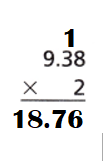
Explanation:
Multiplication of 9.38 and 2:
9.38 × 2 = 18.76.
Question 11.

Answer:

Explanation:
Multiplication of 0.76 and 6:
0.76 × 6 = 4.56.
Question 12.

Answer:
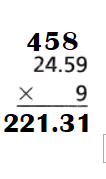
Explanation:
Multiplication of 24.59 and 9:
24.59 × 9 = 221.31.
Use the prices shown for 13-16.

Question 13.
Anna buys 3 pounds of potatoes. How much does she pay?
Answer:
Amount of money for potatoes she pays = $4.95.
Explanation:
Number of pounds of potatoes Anna buys = 3.
Cost of each pound of potatoes = $1.65.
Amount of money for potatoes she pays = Number of pounds of potatoes Anna buys × Cost of each pound of potatoes
= 3 × $1.65
= $4.95.
Question 14.
Describe how you found the cost for 3 pounds of potatoes.
Answer:
I have taken the number of pounds of potatoes Anna buys = 3, Cost of each pound of potatoes = $1.65 and multiplied them to get the solution for the problem.
Explanation:
I have taken the number of pounds of potatoes Anna buys = 3, Cost of each pound of potatoes = $1.65 and multiplied them to get the solution for the problem.
Question 15.
Nicole buys 2 pounds of onions and 4 pounds of tomatoes. How much does she pay?
Answer:
Total amount she pays = $5.74.
Explanation:
Number of pounds of onions Nicole buys = 2.
Cost of each pound of onions = $1.29.
Number of pounds of tomatoes Nicole buys = 4.
Cost of each pound of tomatoes = $0.79.
Total amount she pays = (Number of pounds of onions Nicole buys × Cost of each pound of onions) + (Number of pounds of tomatoes Nicole buys × Cost of each pound of tomatoes)
= (2 × $1.29) + (4 × $0.79)
= $2.58 + $3.16
= $5.74.
Question 16.
Juan buys 3 pounds of onions and 2 pounds of broccoli. Raj buys 5 pounds of potatoes. Who pays more? Explain.
Answer:
Juan pays more than Raj.
Explanation:

Number of pounds of onions Juan buys = 3.
Cost of each pound of onions = $1.29.
Number of pounds of broccoli Juan buys = 2.
Cost of each pound of broccoli = $2.45.
Total amount Juan pays = (Number of pounds of onions Juan buys × Cost of each pound of onions) + (Number of pounds of broccoli Juan buys × Cost of each pound of broccoli)
= (3 × $1.29) + (2 × $2.45)
= $3.87 + $4.90
= $8.77.
Number of pounds of potatoes Raj buys = 5.
Cost of each pound of potatoes = $1.65.
Total amount Raj pays = Number of pounds of potatoes Raj buys × Cost of each pound of potatoes
= 5 × $1.65
= $8.25.
$8.77 > $8.25.
Use the table for 17-18.

Question 17.
What is the cost for 5 pounds of peanuts and 7 pounds of almonds?
Answer:
Total cost of nuts = $25.50.
Explanation:
Cost of each pound of peanuts = $1.25.
Number of pounds of peanuts = 5.
Cost of each pound of almonds = $2.75.
Number of pounds of almonds = 7.
Total cost of nuts = (Cost of each pound of peanuts × Number of pounds of peanuts) + (Cost of each pound of almonds × Number of pounds of almonds)
= ($1.25 × 5) + ($2.75 × 7)
= $6.25 + $19.25
= $25.50.
Question 18.
How much more do 3 pounds of cashews cost than 9 pounds of almonds?
Answer:
$9.75 more 3 pounds of cashews cost than 9 pounds of almonds.
Explanation:

Cost of each pound of almonds = $2.75.
Number of pounds of almonds = 9.
Total cost of almonds = Cost of each pound of almonds × Number of pounds of almonds
= $2.75 × 9
= $24.75.
Cost of each pound of cashews = $11.50.
Number of pounds of cashews = 3.
Total cost of cashews = Cost of each pound of cashews × Number of pounds of cashews
= $11.50 × 3
= $34.50.
Difference:
Total cost of cashews – Total cost of almonds
= $34.50 – $24.75.
= $9.75.
Question 19.
A package of cheese contains eight slices. The scale shows the weight for one slice. What is the weight of the cheese in the package? Describe how you found the answer.
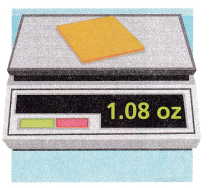
Answer:
Weight of the cheese in the package = 8.64 oz.
Explanation:
Number of slices a package of cheese contains = 8.
Weight of one slice = 1.08 oz.
Weight of the cheese in the package = Number of slices a package of cheese contains × Weight of one slice
= 8 × 1.08 oz
= 8.64 oz.
Question 20.
Geography During the 1962 Nor’easter, tides in Norfolk, Virginia reached 9 feet. At Canada’s Bay of Fundy, tides can reach heights that are 5.89 times as great. What is the maximum height of the Bay of Fundy’s tides?
Answer:
Maximum height of the Bay of Fundy’s tides = 53.01 feet.
Explanation:
Height of tides in Norfolk, Virginia reached = 9 feet.
At Canada’s Bay of Fundy, tides can reach heights that are 5.89 times as great.
=> Maximum height of the Bay of Fundy’s tides = maximum height of the Bay of Fundy’s tides × 5.89
= 9 × 5.89
= 53.01 feet.
Question 21.
Reason When multiplying a decimal by a whole number, how do you decide where to put the decimal point?
Answer:
In multiplication of decimal by a whole number, how many zero are after the number that many places the dot moves to right side of the decimal number.
Explanation:
To multiply decimals: Set up and multiply the numbers as you do with whole numbers. Count the total number of decimal places in both of the factors. Place the decimal point in the product so that the number of decimal places in the product is the sum of the decimal places in the factors.
Question 22.
Model with Mathematics At the movies, adult tickets cost $8.50 and child tickets cost $6.75. How much does it cost 2 adults and 3 children to see a movie? Write and solve an equation to model this situation.
Answer:
Total cost of tickets = $37.25.
Explanation:
Cost of adult tickets = $8.50.
Number of adults = 2.
Cost of child tickets = $6.75.
Number of children = 3.
Total cost of tickets = (Cost of adult tickets × Number of adults) + (Cost of child tickets × Number of children)
= ($8.50 × 2) + ($6.75 × 3)
= $17.00 + $20.25
= $37.25.
Question 23.
Open-Ended What method would you use to multiply 9.38 and 5? Explain your choice.
Answer:
Direct multiplication: 9.38 × 5 = 46.90.
Explanation:
I would use direct multiplication to find the product of 9.38 and 5.
9.38 × 5 = 46.90.